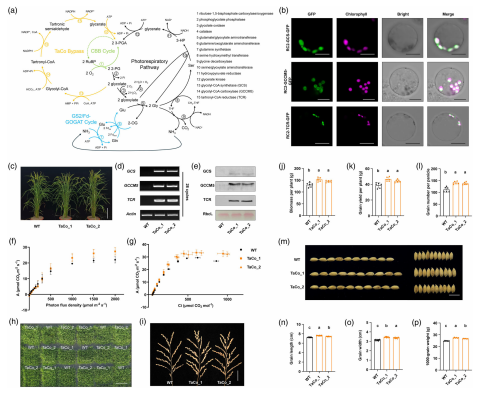Abstract:
energy consumption and uncertainties in molecular regulatory mechanisms (Smith et al., 2023, 2025). In particular, most photorespiratory bypasses
only decrease carbon losses but fail to be carbon-positive, that is, increase net carbon gain through additional CO2 fixation.Synthetic biology offers new solutions for modifying photorespiratory pathways through “design metabolism” strategies (Wurtzel et al., 2019). One such strategy is the tartronylcoenzyme A (TaCo) pathway. The TaCo pathway consists of three enzymes: glycolyl-CoA synthase (GCS), glycolyl-CoA carboxylase (GCCM5) and tartronyl-CoA reductase (TCR), which together convert glycolate into glycerate (Scheffen et al., 2021). The pathway starts with the conversion of glycolate to glycolylCoA by GCS, followed by its carboxylation to tartronyl-CoA by GCCM5 and reduction to glycerate by TCR (Figure 1a). This pathway not only reduces ATP and reducing equivalents consumption by 20% and 30%, respectively, but also introduces additional CO2 through glycolyl-CoA carboxylation, resulting in a carbon-positive photorespiratory bypass (Scheffen et al., 2021; Smith et al., 2025). The TaCo pathway has shown promising results in vitro, but its application in plants has not been tested. This study aims to introduce the TaCo pathway into rice and evaluate its effectiveness in improving crop productivity.
Key Words:
photosynthesis, photorespiratory bypass, tartronyl coenzyme A pathway, synthetic biology, rice, yield.

|